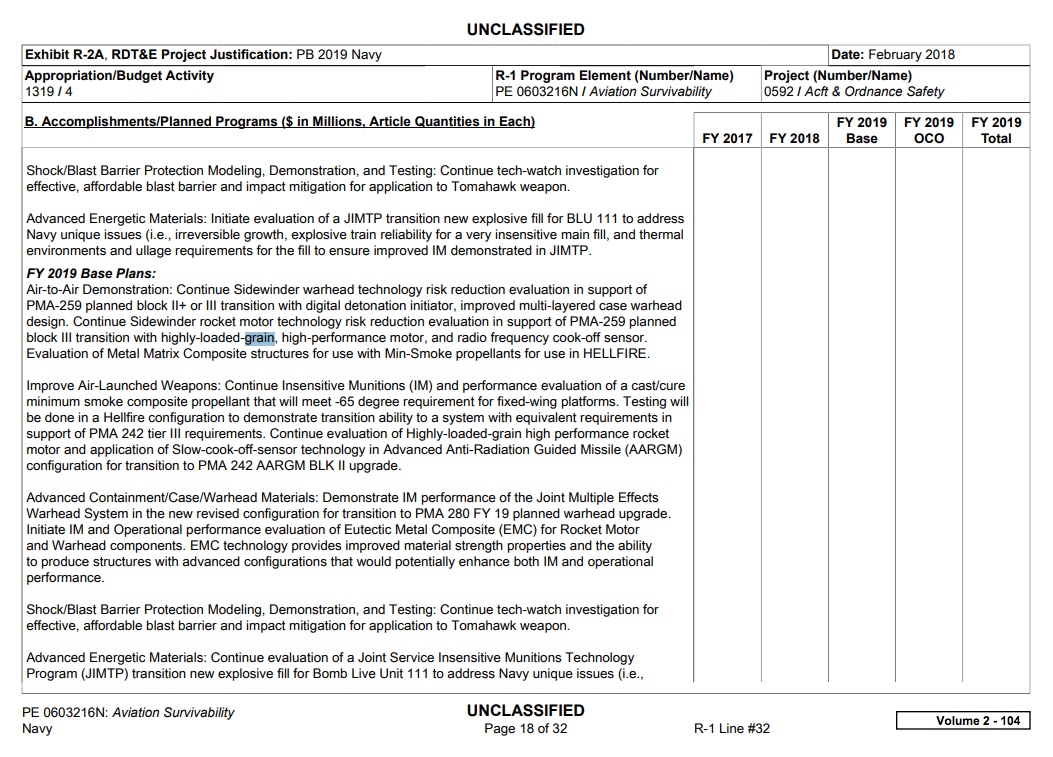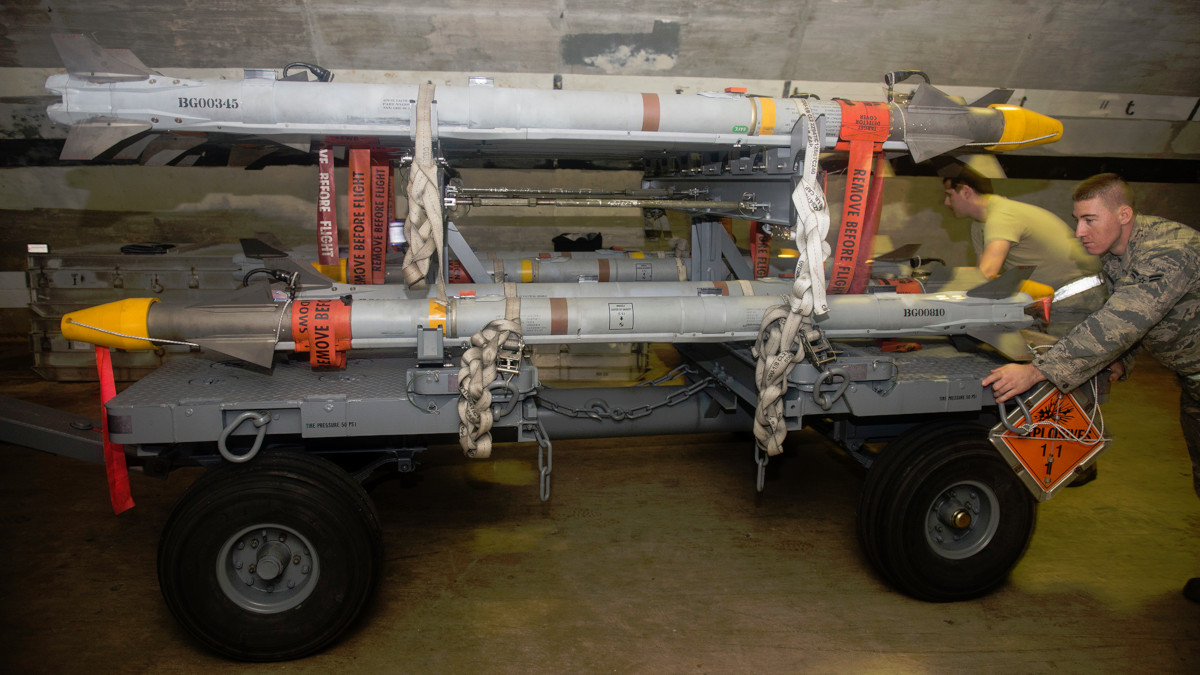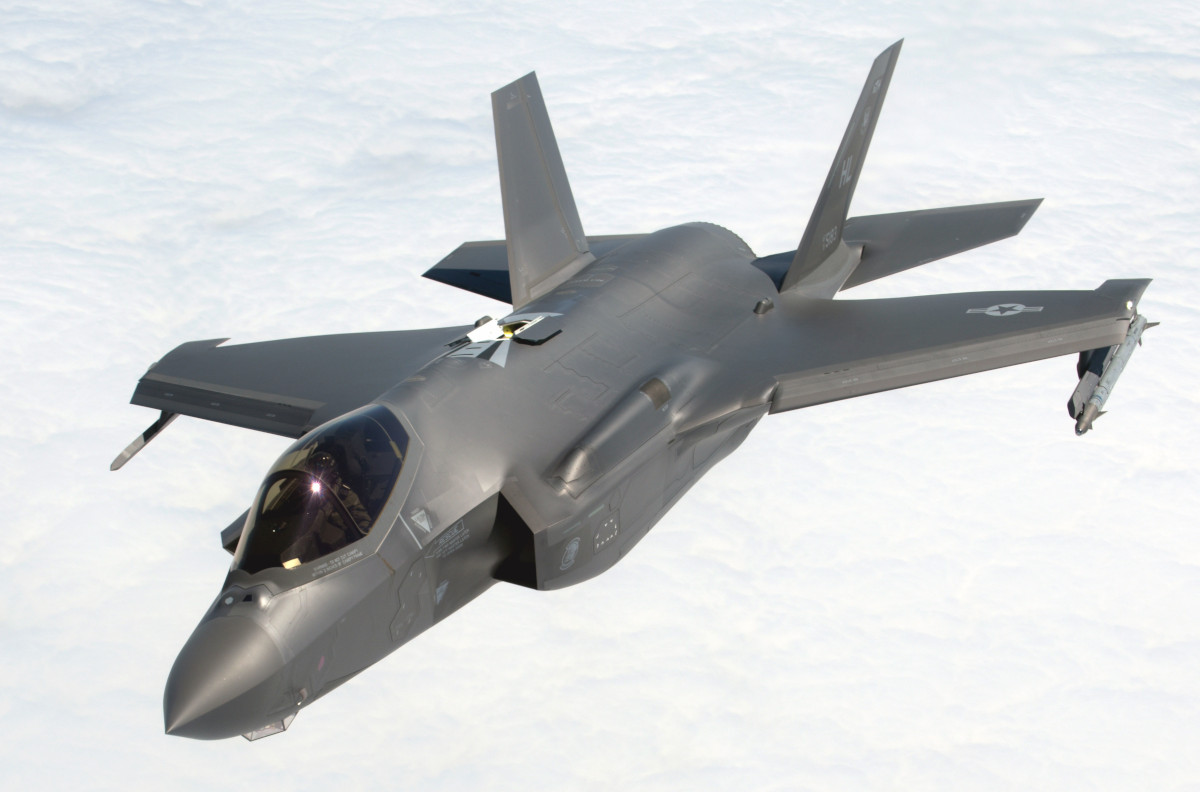When it comes to air-to-air combat, no missile on earth is as iconic as the AIM-9 Sidewinder. It has seen service in many forms and adaptations for over six decades and its continued development is as much a history lesson in jet-age air combat as anything else. Now, Raytheon and the Pentagon are quietly working at developing the next major capability leap for the Sidewinder that will take full advantage of many other developments that have been incorporated into the missile in recent years. As a result, the AIM-9X may finally morph into a missile that is made up of components that are all, or nearly all, different than those found on its predecessor, the AIM-9M.
Arguably the biggest upgrade the Sidewinder had ever seen came in the form of the AIM-9X, which entered service in 2003 and brought with it major and long in the works changes in capabilities, including high-off boresight targeting, thrust vectoring, and an advanced imaging infrared (IIR) seeker. Today’s AIM-9X Block II, also known as the AIM-9X-2, which just entered service in 2015, offers another big leap in capability with its data-link and lock-on-after-launch capabilities, among other improvements. These advances are in addition to the missile’s constantly improving software that makes the most out of its latest physical additions and enhancements.

Still, the AIM-9X wasn’t a totally new missile. Its rocket motor, fusing system, and warhead, among other smaller components, are decades old as they were ported over from the AIM-9M that proceeded it. Raytheon carried over many of these components again to the Block II configuration.
The improved missiles did include “a new processor, a new battery, an electronic ignition safe/arm device, and the DSU-41/B Active Optical Target Detector fuze/datalink assembly,” in addition to software upgrades, according to Pentagon reports.

But the AIM-9X may change again and more dramatically in the not so distant future. Even though the AIM-9X Block III was officially canceled in the 2016 Fiscal Year budget, which came out in 2015, each subsequent budget request has asked for money to continue to develop similar features. Most notably, this includes an entirely new motor that would make use of decades in rocket technology advances.
The so-called “highly-loaded-grain, high-performance motor, and radiofrequency cook-off sensor” would give the AIM-9X significantly enhanced range. The planned Block III configuration had also included a new, safer insensitive munitions warhead design.


Just on Aug. 29, 2019, Naval Air Systems Command announced its intention to negotiate a new deal with Raytheon to conduct “continued software support, future software growth development, software improvements, trade studies, technical support, and risk reduction efforts,” as well as perform “trade-studies and analyses to investigate and support future capabilities” with regards to the AIM-9X. So it is clear that the AIM-9X is still very much a work in progress, with Block III-like features on the way.
Exactly how much extra range a Block III AIM-9X might offer remains unclear, but our sources have said the missiles could be able to fly as much as 50 percent further than what it can in its current form. The Navy itself said the goal was a 60 percent increase in total, which the missile would gain from the improved rocket motor, new flight programming, leveraging its cook-off sensor, and by receiving mid-course updates from its launch platform. Either way, this would equate to a huge boost in combat capability and it would push the AIM-9X even farther into the intermediate-range envelope than it already is.
Currently, the AIM-9X Sidewinder has a published range of roughly up to 20 miles, although the unpublished numbers are usually more impressive. Still, range figures overall are dubious at best and the missile’s true real-world range is based on the flight profile dictated by each engagement, which can vary wildly. In other words, that range can be drastically reduced to just handful of miles if a lot of maneuvering energy is needed to reach its target.

The AIM-9X, as it sits today, is really more than a short-range dogfighting air-to-air missile. Under certain conditions, its imaging infrared seeker can see well beyond the distance it can actually travel. It is also adept at striking targets on the surface of the earth as a secondary formal capability.
With the addition of the data-link on AIM-9X Block II, the Sidewinder provides a lock-on-after-launch capability, meaning it can be fired at an enemy without first locking its seeker on to the target. Lock-on-after-launch capability is especially important for stealthy fighters with weapons bays, such as the F-22 Raptor and the F-35 Joint Strike Fighter, but it also provides more flexible targeting for 4th generation fighters that mount their missiles externally.

In addition, the networked AIM-9X is far smarter than its predecessor and, paired with new software, its range is increased due to more intricate and specific flight models that the missile will employ depending on the tactical situation and data-linked telemetry updates from the aircraft it is launched from. Furthermore, the Block II AIM-9X allows for targeting of enemy aircraft even if the target is outside of the range of its seeker. The fighter will feed the missile telemetry from its sensors—primarily its radar, but potentially also its passive electronic warfare suite, and soon, at least in some cases, its IRST—until it flies close enough to the target to lock on with its own seeker.
This means that even in bad weather and obscured environments, the AIM-9X can be just as lethal at the edge of its engagement envelope. It also enables third party targeting data to feed to the launching aircraft, which could help cue the missile to targets a pilot cannot “see” using their own onboard sensors alone. This is especially useful when a fighter is operating in a stealthy, electromagnetically silent mode, in which its own radar would not be activated.

So, with all this in mind, it really is time to get the Sidewinder a new motor to take even more advantage of its data-link capabilities, in effect turning a short-range missile into an intermediate-to-medium-range one that can work substantially further out than the within visual range arena. Every platform that carries the AIM-9X could benefit from this, but the F-22, in particular, which only recently received AIM-9X capability, could squeeze a lot more capability out of its flank weapons bays that house Sidewinders. A networked AIM-9X also means better survivability for F-22s as they can remain farther outside detection range of enemy aircraft when employing the longer-range Sidewinder variant.
The F-35, which has a sensor suite that could make uniquely potent use of the AIM-9X Block IIs lock-on-after-launch capability, would also greatly benefit from a Sidewinder that features extra range, especially when it comes to hitting targets to the side or even behind the aircraft during dogfights. Also, longer-range Sidewinders, carried externally, would provide valuable BVR capability in addition to the two AIM-120s that can be carried internally at this time.

Eventually, the F-35’s internal AIM-120 carriage capability could increase to six missiles, but until the “Sidekick” modification is actually fielded, the four missiles the jet can carry internally will remain something of a limitation. Carrying Sidewinders externally may trade some low-observability for the stealth fighter, but it seems as if the latest iteration of the Sidewinder may actually include some stealthy features to help overcome this.
Though the AIM-9X Block III was officially scrapped four years ago, in December 2017, the U.S. Navy and the Air Force began buying dozens of Block II+ missiles, specifically for the Joint Strike Fighter. The Navy’s order included missiles for Marine Corps F-35Bs. Australia, Israel, and the Netherlands, have also since purchased these missiles for their F-35s.
“The Block II+ provides increased survivability over the Block II for the F-35,” according to a Selected Acquisition Report that the Pentagon sent to Congress in 2017. The missile, also known as the AIM-9X-3, “incorporates specialized external materials to enhance aircraft platform survivability,” the Navy’s Fiscal Year 2018 budget request highlights book, which came out that same year, added.
So, it appears as if the enhancements under AIM-9X Block II+ include stealthy coatings and possibly even structures to the baseline AIM-9X Block II design. This along with the F-35’s canted wingtip pylons likely help offset at least some of the radar cross-section increase that comes with when carrying Sidewinders externally.

As for any plans to migrate the AIM-9X into the F-35’s weapons bays, there is no word on this that we know of, but it seems highly logical. If and when Sidekick is deployed, being able to carry four AIM-120s and a pair of AIM-9X Block IIs internally would substantially add to the jet’s full-up stealth air-to-air combat flexibility.
What remains unclear is when the new motor might get integrated into the AIM-9X Block II+ configuration and if it will also come with changes to the missile’s warhead and other improvements to the missile. It is very possible that when the Navy decided to shelve the full Block III upgrade program, it decided to spiral the individual improvements into smaller updates.
With the new data-link capability, integrating a new motor should have become a more pressing and logical next step. As recently as 2019, budget documents show that this and other improvements are still in development, so exactly when they might arrive and if they will come as a complete package or appear piecemeal remains to be seen. But regardless, with this latest contracting announcement posted, we will probably see a longer-range, fully modernized, and more deadly Sidewinder sooner rather than later.
Contact the author: Tyler@thedrive.com
